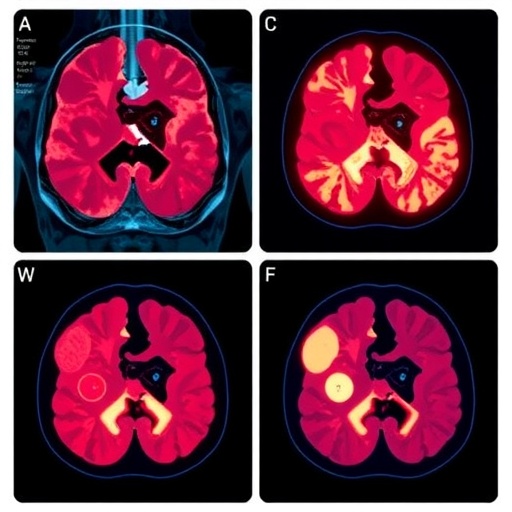
As global temperatures continue their inexorable rise, the state of California presents a complex portrait of climate-related health consequences that defy simplistic narratives. Recent research conducted by teams at the University of California San Diego and Stanford University reveals a paradoxical yet critical insight: while the number of deaths attributable to cold temperatures is declining—an ostensibly positive development—this gain is offset by a marked increase in emergency department (ED) visits due to heat exposure. This nuanced delineation between mortality and morbidity highlights an urgent and often overlooked public health challenge, underscoring the multidimensional nature of climate change’s impact on human health.
The study, published in Science Advances in July 2025, leverages an extensive dataset stretching over a decade (2006–2017) encompassing all recorded deaths, emergency department visits, hospitalization events, and correlated daily temperature records across California. This comprehensive analysis exposes the differential pathways through which hot and cold extremes affect health outcomes. Unlike cold temperatures, which primarily elevate mortality risks especially among older adults, heat imposes a broader burden manifesting in increased morbidity across diverse age groups, resulting in more frequent ED admissions. This complexity underpins a critical reconsideration of how climate impacts are assessed and addressed in public health frameworks.
Dr. Carlos F. Gould, the lead author and assistant professor at UC San Diego’s Herbert Wertheim School of Public Health and Human Longevity Science, emphasizes that the health effects of heat extend beyond fatalities. He points out that while mortality statistics provide crucial data, they only represent the tip of the iceberg. Emergency department visits capture a wider spectrum of adverse health events that do not necessarily culminate in death but nonetheless impose significant strain on healthcare infrastructure and individuals’ well-being. This expanded morbidity profile includes conditions traditionally underappreciated in climate health discourse, such as heat-related injuries, mental health crises, and toxic exposures.
.adsslot_ca8vNYuWLh{width:728px !important;height:90px !important;}
@media(max-width:1199px){ .adsslot_ca8vNYuWLh{width:468px !important;height:60px !important;}
}
@media(max-width:767px){ .adsslot_ca8vNYuWLh{width:320px !important;height:50px !important;}
}
ADVERTISEMENT
Age stratification emerges as a pivotal factor shaping vulnerability profiles under thermal extremes. The investigation delineates a contrasting susceptibility spectrum: older adults exhibit heightened sensitivity to cold stress, which accentuates mortality risks during colder periods, whereas younger demographics—children and young adults—are disproportionately affected by the physiological and psychological stresses of heat. These findings advocate for precision targeting in public health interventions, moving beyond generic warnings toward tailored strategies that consider demographic-specific vulnerabilities and healthcare resource allocations.
Importantly, the decline in cold-induced mortality, driven by a reduction in the frequency and intensity of extreme cold days due to climate change, constitutes a public health gain. However, this benefit is partially negated by an upsurge in heat-driven morbidity, which manifests as a surge in emergency visits and hospitalizations. This emerging pattern demands a recalibrated approach to healthcare system preparedness and climate adaptation policies. Hospitals and emergency services must brace for increased demand during heatwaves, and insurers, policymakers, and public health agencies require data-driven frameworks to mitigate heat-associated health burdens.
Marshall Burke, co-author and environmental social scientist at Stanford University’s Doerr School of Sustainability, highlights a transformative aspect of this research: understanding the interplay between temperature extremes and health outcomes not only under current climatic conditions but also in the foreseeable future as greenhouse gas emissions continue to drive planetary warming. He stresses that these insights remain relevant regardless of climate change dynamics but become more imperative as warming reshapes exposure patterns and amplifies vulnerabilities across populations.
The socioeconomic implications of these health trends are profound. Chronic disease management in the United States already consumes over $3 trillion annually, representing a substantial portion of the country’s gross domestic product. Projecting forward, moderate climate change scenarios forecast that California could see approximately 53,500 fewer deaths annually due to diminished cold weather hazards, translating into roughly $30 billion in healthcare savings. Yet, the state may concurrently experience an estimated 1.5 million additional heat-related emergency department visits, incurring around $52 million in extra healthcare expenditures. This fiscal paradox highlights the intricate balance between different health impacts of climate change and the necessity for nuanced economic forecasting in public health planning.
A particularly striking dimension revealed by this study is the range of medical conditions exacerbated by heat, which extend well beyond traditionally recognized heat stroke and cardiovascular stress. The data illustrate significant increases in poisonings, endocrine disorders, digestive system ailments, and injury rates correlated with elevated temperatures. This constellation of health effects suggests that heatwaves exert pervasive systemic stress, possibly mediated through both physiological mechanisms and behavioral factors induced by thermal discomfort and environmental hazards.
Dr. Alexandra K. Heaney, assistant professor at UC San Diego and a co-author, underscores the imperative to broaden our understanding and response paradigms to heat-related health impacts. She advocates for holistic surveillance systems and intervention strategies that incorporate the full spectrum of heat-sensitive conditions, thereby enhancing resilience and health outcomes amid accelerating climate change. This approach would challenge the prevailing focus on mortality alone and pave the way for more comprehensive public health readiness.
Collaborative and interdisciplinary efforts characterize this research, bringing together experts from both UC San Diego and Stanford University. The cross-institutional team integrates expertise in public health, environmental social sciences, epidemiology, and economics to produce a robust analysis that bridges data science and policy-relevant insights. Such integration exemplifies the emerging paradigm in climate health research, where siloed approaches give way to synthesis addressing multifactorial challenges.
Funding for the study was sourced from prestigious organizations including the Robert Wood Johnson Foundation and various arms of the National Institutes of Health. The absence of conflicts of interest declared by the authors further enhances the credibility and transparency of the research, reinforcing trust in the findings presented.
In sum, this study reframes our understanding of temperature-related health impacts by decoupling mortality from morbidity and emphasizing the significant, though often invisible, strain heat exerts on healthcare systems and diverse populations. It prompts an urgent call for responsive public health strategies that are age-aware, morbidity-inclusive, and economically informed. As climate change intensifies, such nuanced evidence becomes indispensable for safeguarding public health and ensuring resilient, equitable healthcare infrastructures in the face of rising temperatures.
Subject of Research: People
Article Title: Temperature extremes impact mortality and morbidity differently
News Publication Date: 30-Jul-2025
Web References:
https://www.science.org/doi/10.1126/sciadv.adr3070
References:
Gould, C.F., Heaney, A.K., Heft-Neal, S., Bendavid, E., Callahan, C.W., Kiang, M.V., Burke, M., & Zivin, J.G. (2025). Temperature extremes impact mortality and morbidity differently. Science Advances. https://doi.org/10.1126/sciadv.adr3070
Keywords: Public health, Environmental health, Climate change, Environmental issues, Emergency rooms, Hospitals, Human health
Tags: California climate change health impactsclimate change public health challengescomprehensive climate health studydecline in cold-related deathsemergency department visits heat exposurehealth outcomes temperature extremesincrease in heat-related emergenciesmortality morbidity climate changemultidimensional effects of climate changeolder adults cold temperature riskspublic health frameworks climate assessmentStanford University climate research





